Day 1 of an Early Spring 3-day tour. It was forecast to rain pretty much all day today, but we were lucky – we had a little bit of drizzle on and off first thing and a heavy shower early afternoon, but otherwise it remained largely dry and the sun even came out at times. We made the most of it, spending the day on the North Norfolk coast.
We headed for Cley first this morning, and drove down Beach Road to the old Coastguards car park. Getting out, we scanned the Eye Field, picking up a single Golden Plover still among the molehills. A couple of Oystercatchers, a Redshank and a Lapwing were around the edge of the pool and another Redshank flew in displaying over the overflow car park and landed on a fence post in front of us. Shortly after, it had a go at balancing on the wire instead, but looked much more precarious!
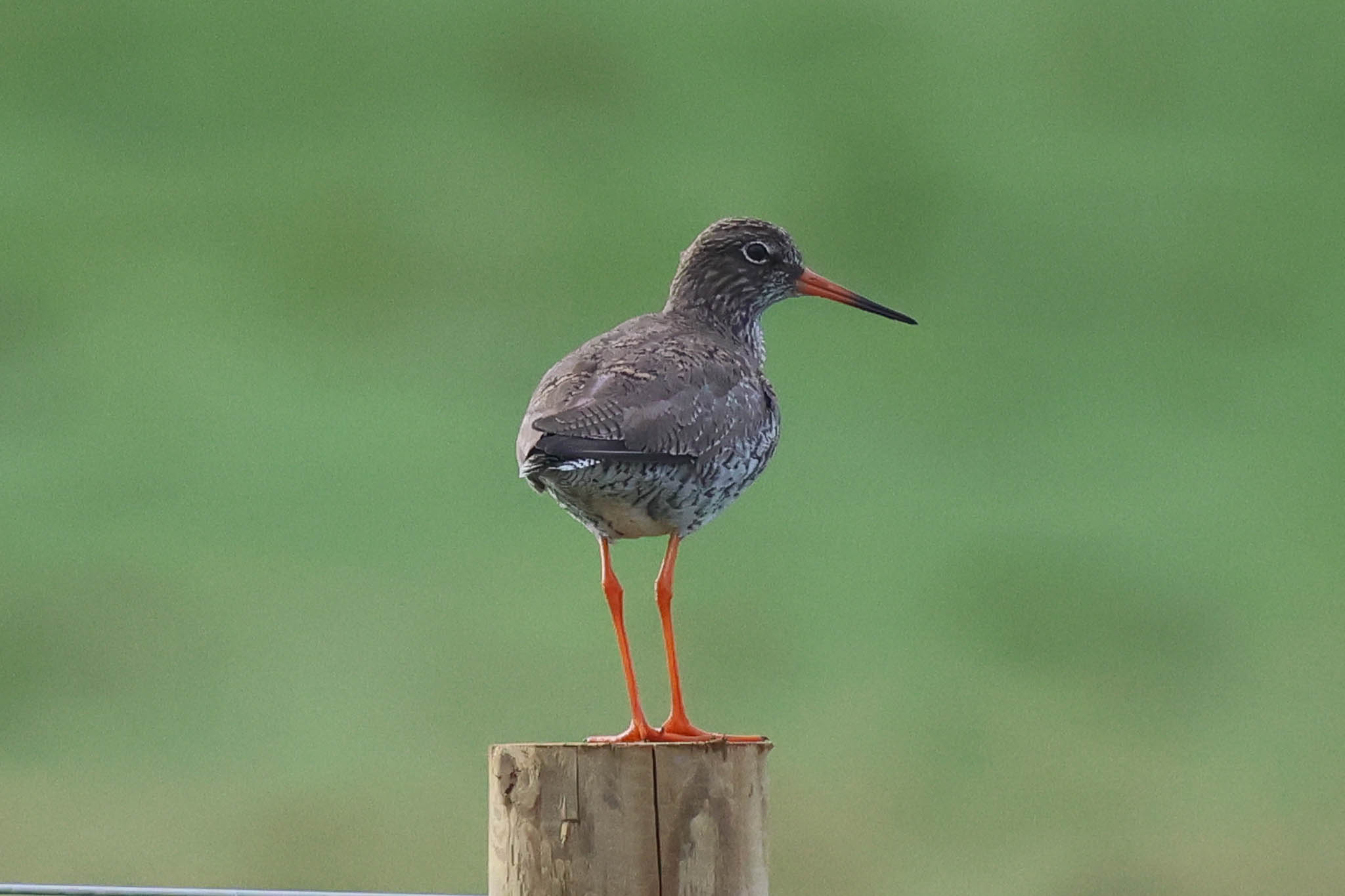
There were one or two Skylarks and Meadow Pipits in the grass. We were hoping for a Wheatear, but couldn’t see one out in the field this morning, or around the fence. When one of the group saw something flick up and then drop off the pill box further along the beach, it sounded promising so we walked up to look but it had disappeared.
Looking out to sea, we spotted a Peregrine flying in from some way out with prey in its talons. It had probably been hunting for exhausted spring migrants offshore. It came in over the beach, disappeared low behind the ridge in the grass and didn’t come out the other side, so we walked up to top of the field to see if we could find it. There was no sign at first, but when we walked on a few metres it came up from just over crest and disappeared off over the marshes.
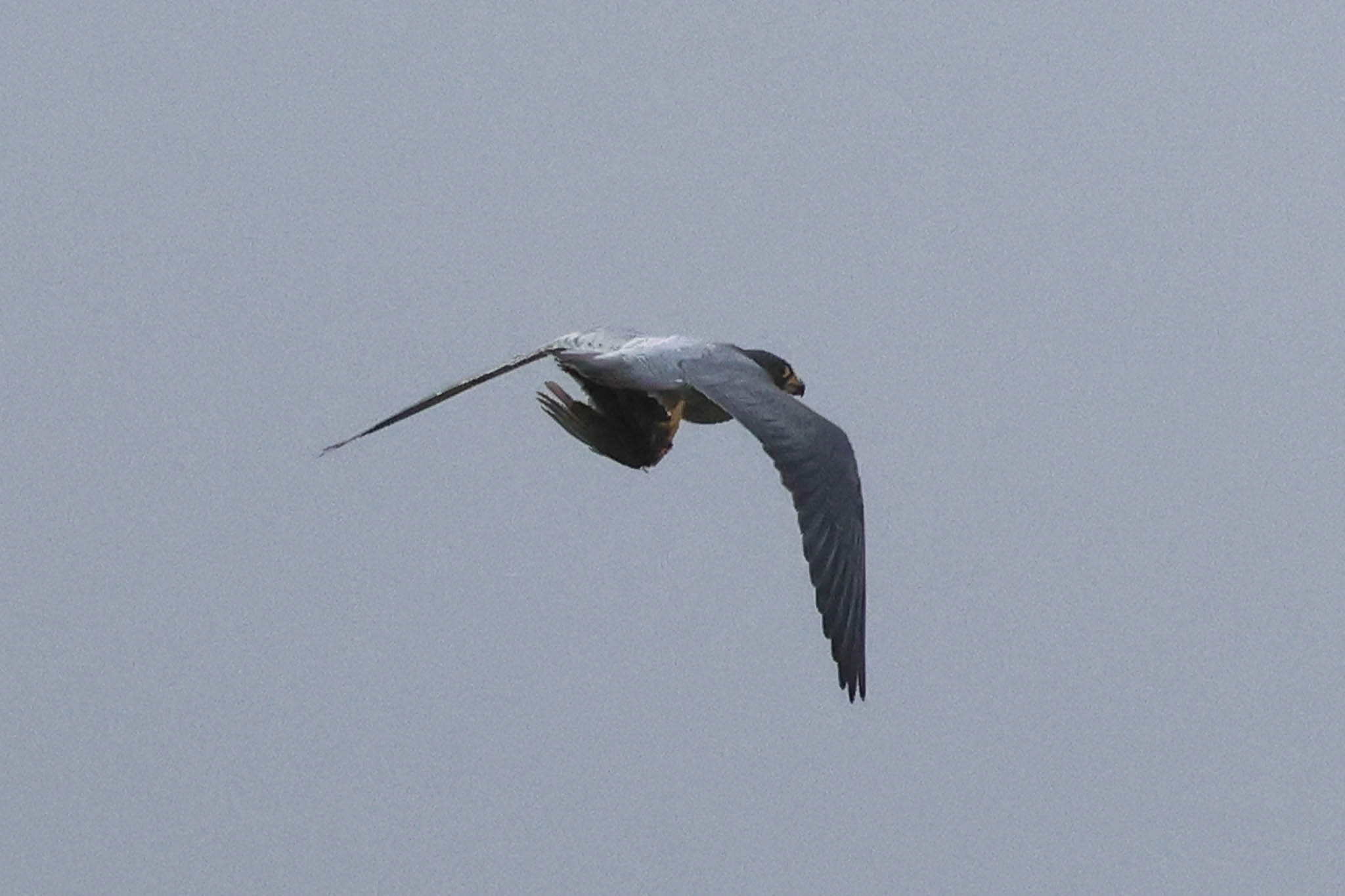
We stood on the top of the ridge and scanned the marshes to the south. The Long-billed Dowitcher had been in front of Daukes Hide yesterday and we could just see it from here now, albeit very distantly. We would have a look from the hides later. There was a nice selection of ducks, including a smart drake Pintail. Several Grey Herons were standing statue-like in the field behind the Visitor Centre and five Little Egrets were perched in the top of the neighbouring wood.
One of group had been running late this morning, and now joined us. They had seen a Wheatear as they they walked by the pillbox and so we kept looking back until a female appeared on top. Then we noticed a male Wheatear flick up onto the fence, before it flew out to the beach and then up on to the pillbox too. We thought we would walk back for a closer look, but by the time we got there they had both disappeared again. A second summer Mediterranean Gull flew past over the edge of the sea.
We drove round to Walsey Hills next. Two Chiffchaffs were singing as we got out of the minibus and a quick scan of Snipe’s Marsh produced a few Gadwall, a couple of Coot and a pair of Little Grebes.
From the start of East Bank, we could see a pair of Common Pochard on Don’s Pool. There had been a Sedge Warbler here the last few days, so we stopped and listened but couldn’t hear at first. We did hear Bearded Tits calling, and looked across to see three flitting around the base of the reeds on the back of the pool, two males and a female. A Cetti’s Warbler was shouting from the reedy ditch right in front of us, and unusually kept coming right up into full view, but just as we were looking at something else! The Sedge Warbler then appeared low in the reeds a little further up, flew across the path and started singing from the brambles the other side. Our first of year.
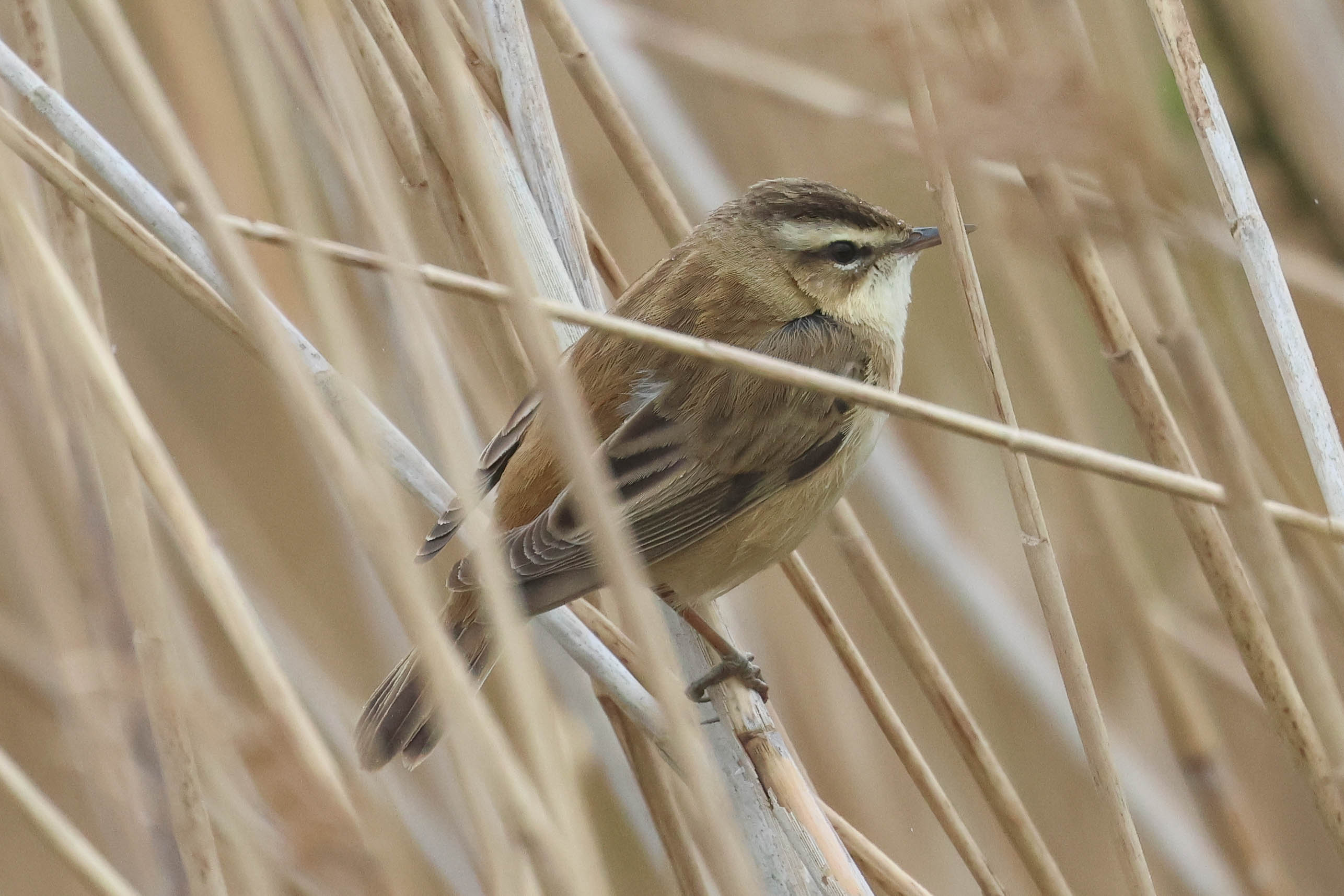
Two Spoonbills circled over the wood across the road, dropped in for a minute, then flew out again and off towards the scrapes. A pair of Marsh Harriers flew round right in front of us too. There was so much activity, we didn’t know which way to look!
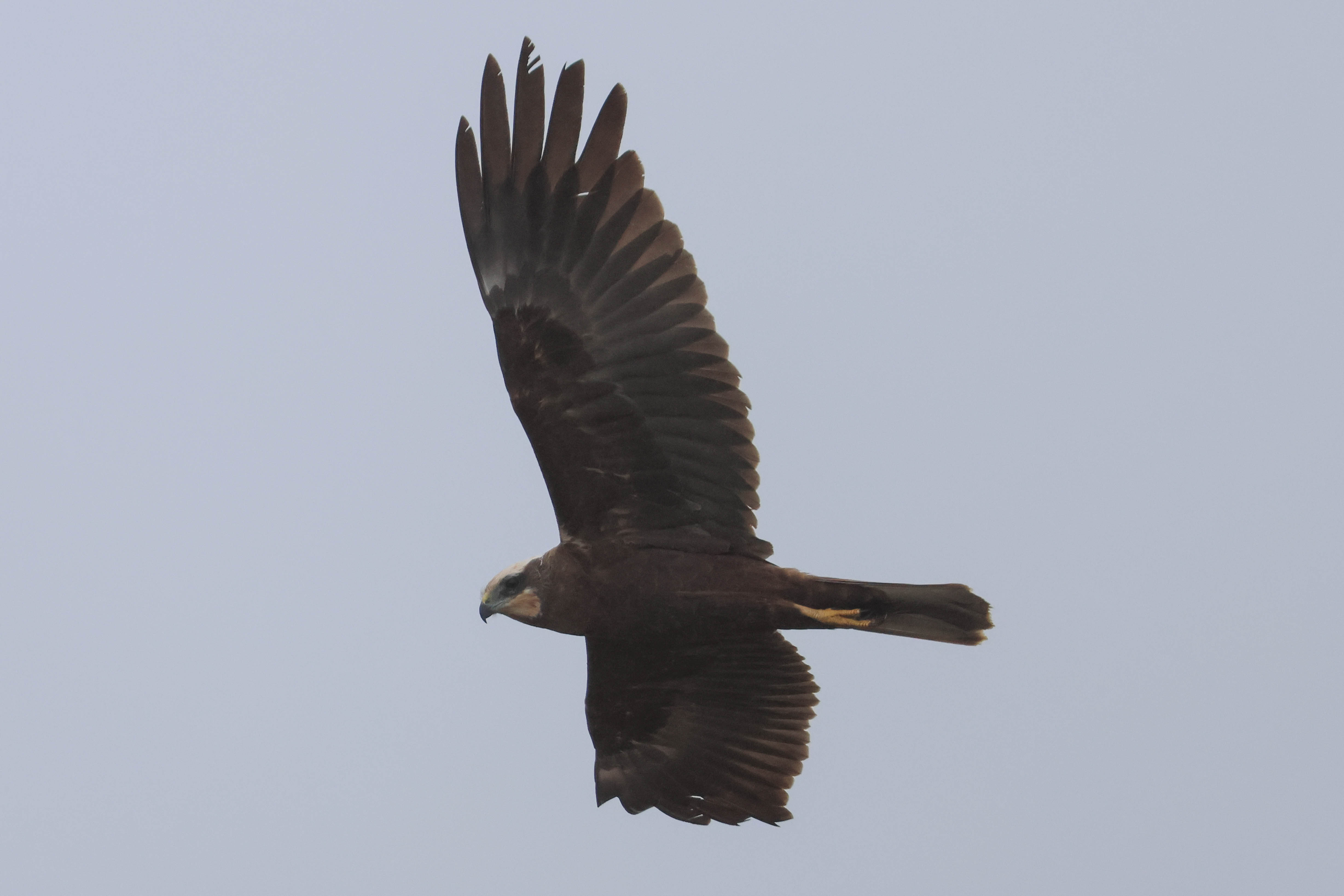
One or two Water Pipits had been feeding in the area of cut reeds again recently, so we walked on and stopped to scan. One of the group found a Common Snipe feeding along the back edge, which had us going briefly as it bobbed a couple of times before it came out into view. Then we found a Water Pipit further over along the back, in full summer plumage with pink underparts. It was on a low mud bank, but then walked down into the reed stems and disappeared from view before anyone could see it.
We persevered and eventually two Water Pipits flew up. They chased each other out over the reedbed beyond, one flew off but the other turned and dropped back in. Despite seeing where it landed, we couldn’t find it again at first. While we were scanning though, we did find a real Jack Snipe now. Finally the Water Pipit came out and stopped to preen on a small mound where we could get it in the scope and all get a proper look at it. It was worth the wait – looking very smart now.
Many have already departed, back to Russia for the breeding season, but there was still a good number of Wigeon on the grazing marshes the other side of the bank. One or two Lapwings were displaying, flying round, tumbling and singing. A couple of Ruff were feeding on the cut reeds, but now we had good close views of one on the mud on the near edge of the Serpentine. It was already starting to moult into spring plumage, with some dark patterned feathers in its upperparts, but too early for its extravagant ruff yet.
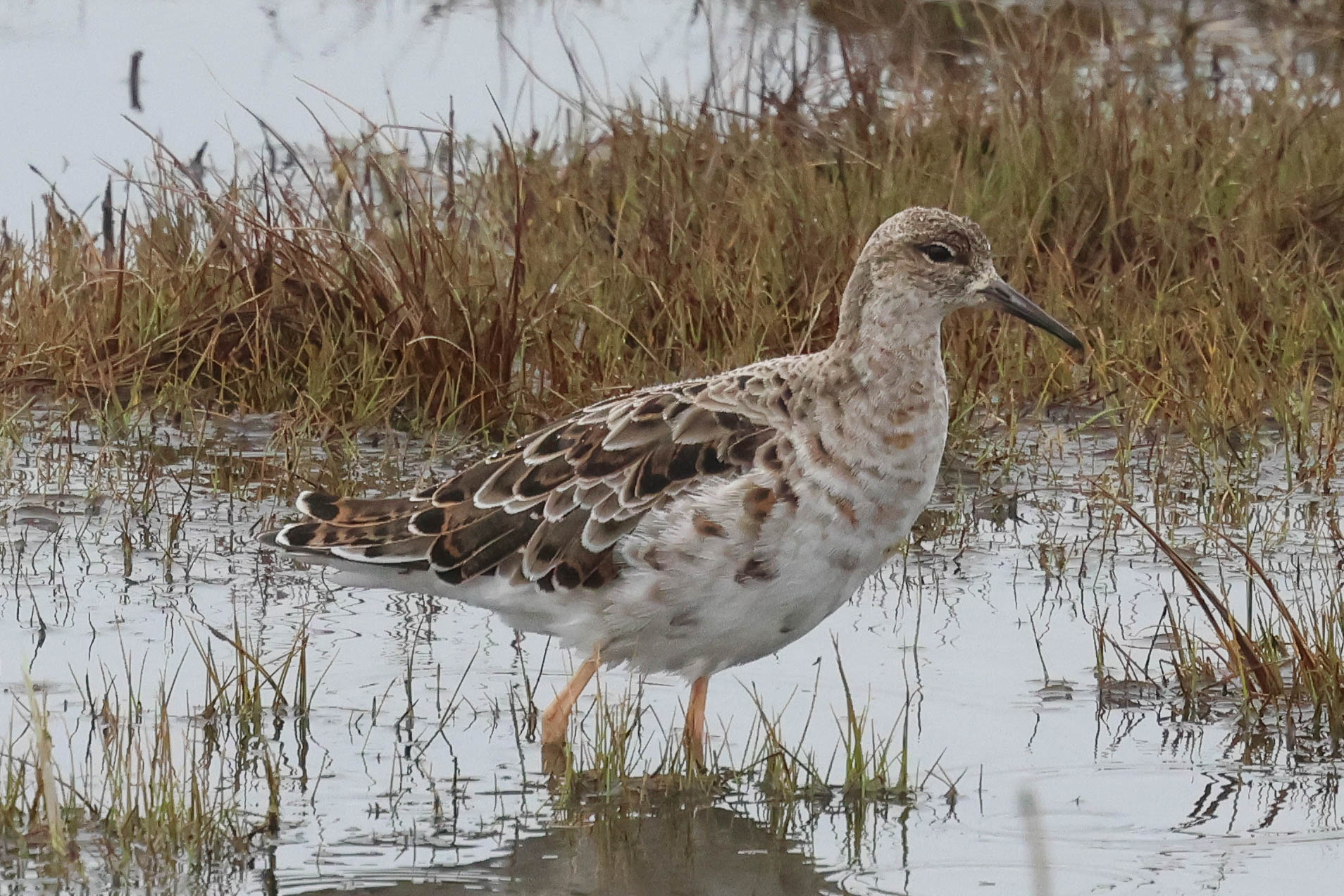
A male Marsh Harrier circled up in the distance, out over Pope’s reedbed, We could see it had something in its talons, so we all watched to see what would happen. It flew over towards the bank in front of us, and a female came up calling from the main reedbed behind. She started displaying, then swooped below the male, as he dropped the food and she caught it.
Carrying on up the bank, we stopped to scan the brackish pools. Another drake Pintail was upending, a bit closer then the one we had seen earlier, and we admired its long pin-tail in the scope. A single Ringed Plover was on the far edge and a Curlew and a Little Egret feeding on the smaller pools below the path. We could see lots of pipits and wagtails on the shingle beyond. We had a quick look out at Arnold’s Marsh from the shelter. There were lots of Dunlin, Ringed Plover and Redshanks and a single Grey Plover at the back. A pair of Linnets were feeding on the saltmarsh.
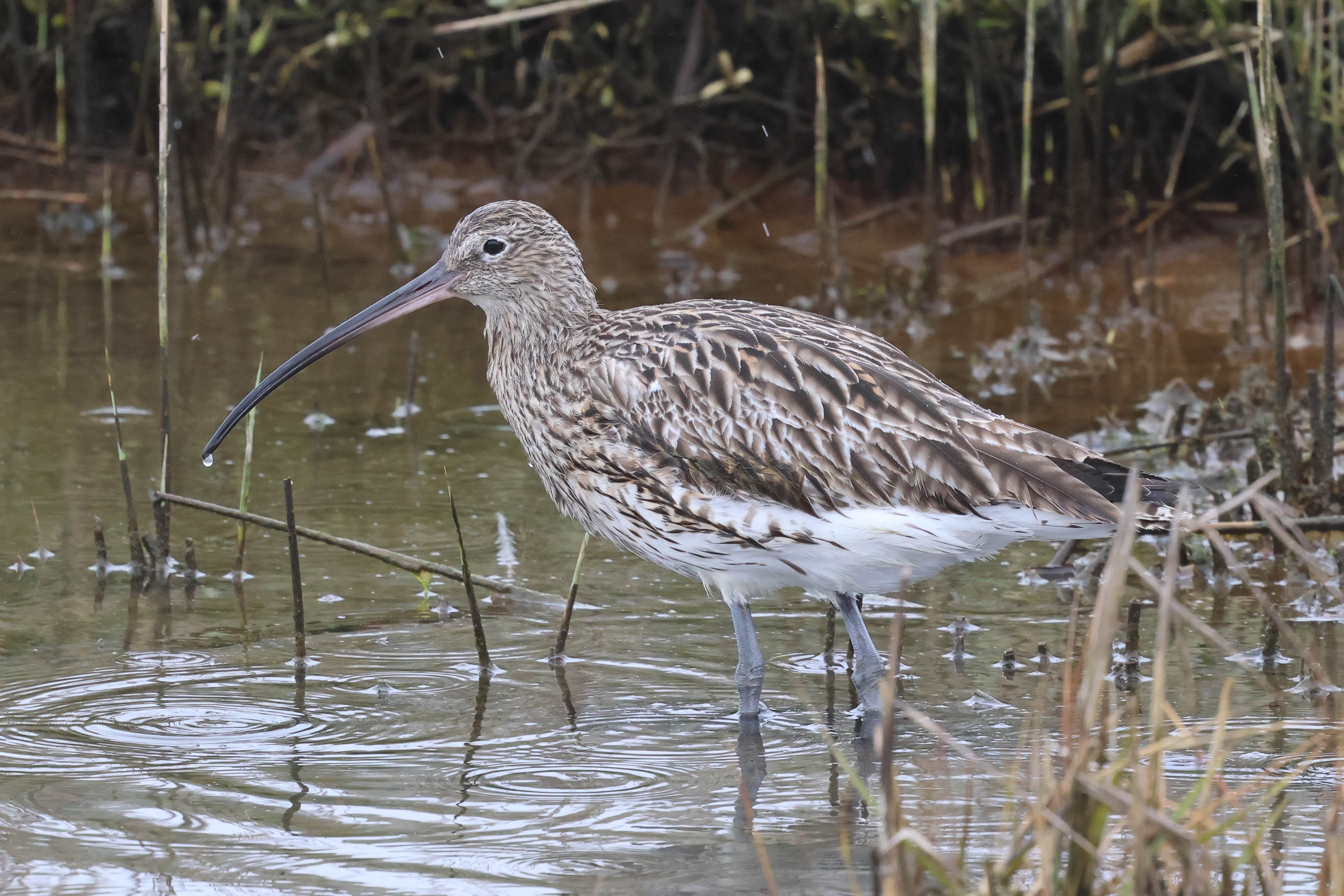
Just before the beach, we stopped to scan the shingle behind the brackish pools. We found at least three White Wagtails now with a couple of Pied Wagtails and all the pipits, spring migrants stopping to feed on their way north. We could see a male Wheatear on the grass along the remains of the shingle ridge to the east, but someone had just come back and told us there was no sign of any Snow Buntings this morning, so we didn’t walk all the way down.
As we walked back, a pair of Marsh Harriers were displaying over the main reedbed now. It was time for lunch already, so we drove round to the Visitor Centre and sat down on the picnic tables to eat. The sun was out and it was warm in the sunshine now. A Peacock butterfly fluttered around the trees and a Chiffchaff flew in and started singing in the remains of a small willow just behind us. It was too good to last though and a grey cloud appeared overhead and it started to spit with rain. As it got heavier, we quickly finished lunch and packed up, and went in to the dry in the Visitor Centre to get permits for the reserve.
The rain was gradually easing, so we walked out to the central hides. Another Sedge Warbler was singing by the boardwalk and we stopped to watch a Bearded Tit disappearing into the reeds right by the hides. We went in to Daukes Hide, and found several people watching the Long-billed Dowitcher which was now on the bank right in front of the hide. Best views yet! It has been hanging around since mid October now, so it will be interesting to see how much longer it stays.
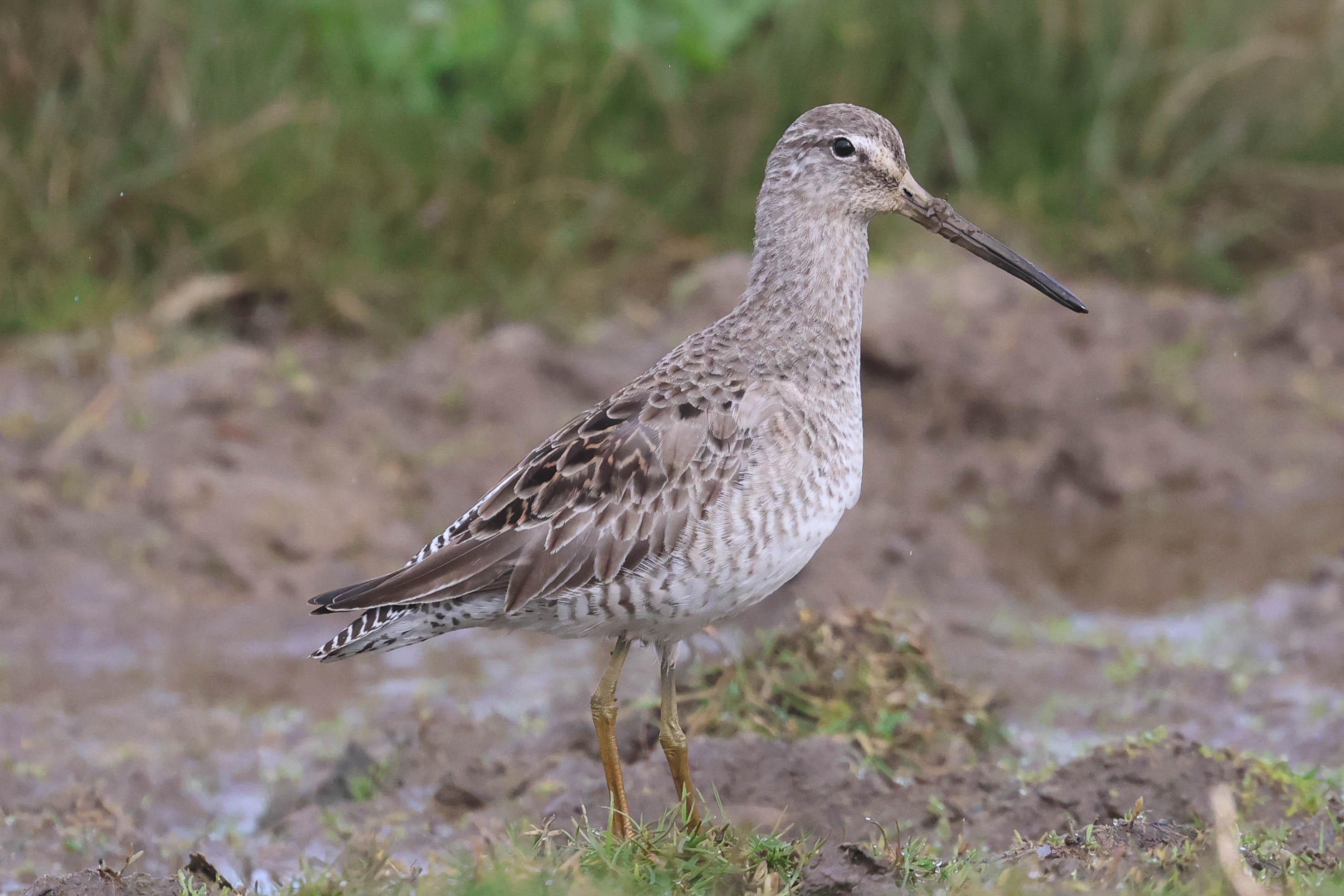
It was great to watch the Long-billed Dowitcher feeding, together with two Common Snipe at one point giving a nice comparison. A Black-tailed Godwit found a worm on the bank and was chased by a Black-headed Gull, the Dowitcher flying round with it. When it came back to the bank, it went to sleep, giving us a good view of its barred tail and the white extending up its back. There were more Black-tailed Godwits, several already well advanced into rusty breeding plumage, and several more Ruff on here too and a few Dunlin further back.
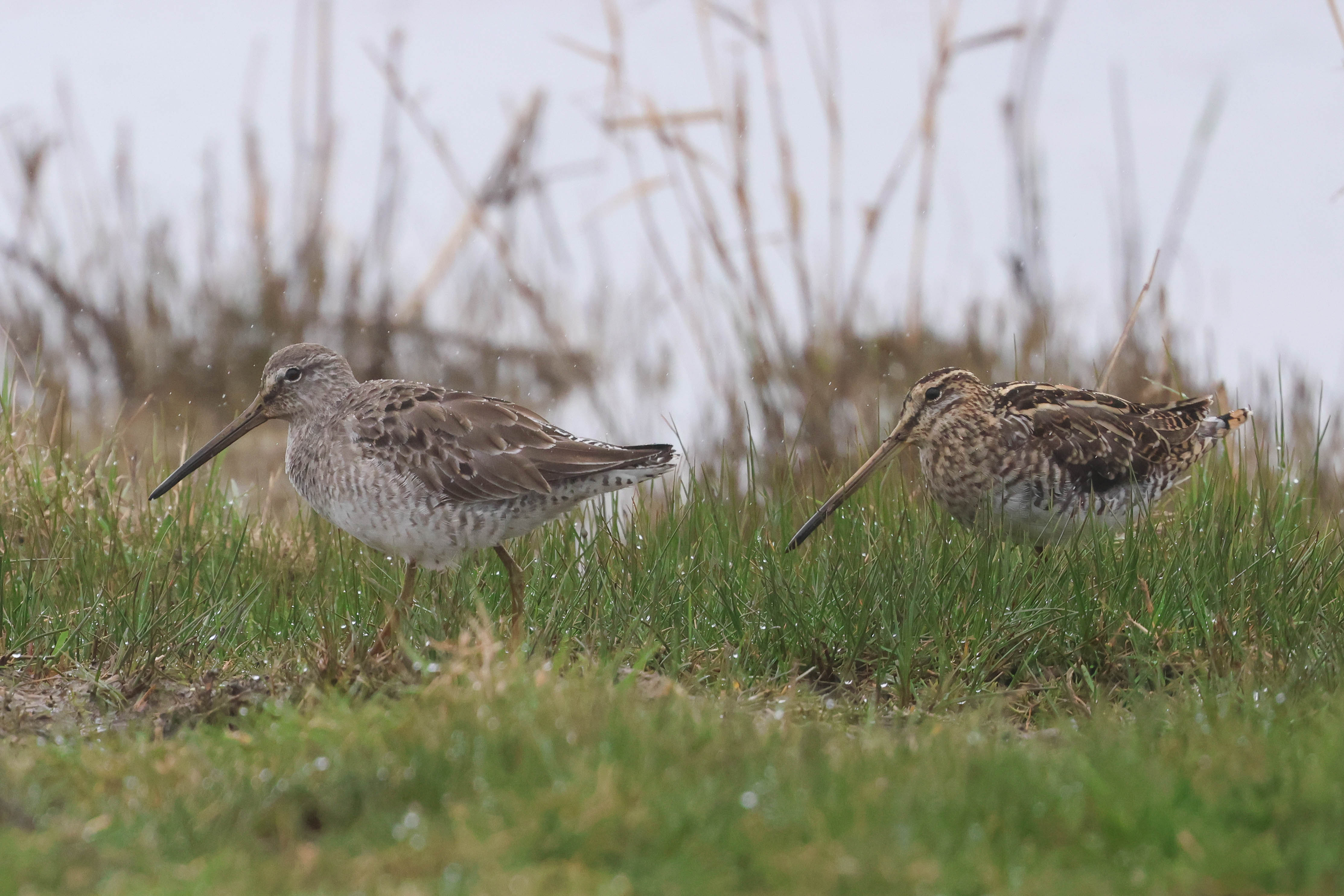
There had been a pair of Bitterns here earlier, but they had not been seen for at least half an hour. We had been told they were coming out periodically this morning, so we persevered, watching and waiting. Eventually our patience was rewarded. The rain had stopped and as the sun came out, the male Bittern came out of the reeds on the back edge of the scrape. We had great views through the scope as it weaved in and out, – it kept disappearing in, then we could see its neck snaking through, before it came out into full view several times. Fantastic to watch.

Back at the Visitor Centre, we were just packing up when a Chocolate Mining Bee landed inside the back of the minibus. We still had time for one last stop, so we decided to have a quick look at Stiffkey Fen on our way home. As we walked out towards the Fen, a Marsh Harrier was displaying high over the path. A Muntjac was standing bold as brass on the edge of the trees, and a couple of Coal Tits flitted around above. There were several Chiffchaffs and Long-tailed Tits feeding in sallows by path.
Out onto the seawall, we looked across the Fen. There was no sign of the Garganey which had apparently been here yesterday, but we did find two Little Ringed Plovers out on the edge of one of the islands. Through the scope, we could just see their golden yellow eye rings.
Down to the corner of the harbour, a single Grey Plover was on the mud in the channel with the Redshanks. We could see lots of Brent Geese on the edge of the water and picked out a single Pale-bellied Brent out on the mud with all the Dark-bellied Brents. Further out, lots of Turnstones were feeding on the shingle spit and we found Bar-tailed Godwit, Sandering and a flock of Knot on the sandy island in the middle. It is a lovely spot to just stand and watch, but unfortunately it was time to walk back. As we got to the steps at the far end of the seawall, we noticed a Greenshank feeding in the channel further up now. Probably one of the over-wintering birds rather than a spring migrant.
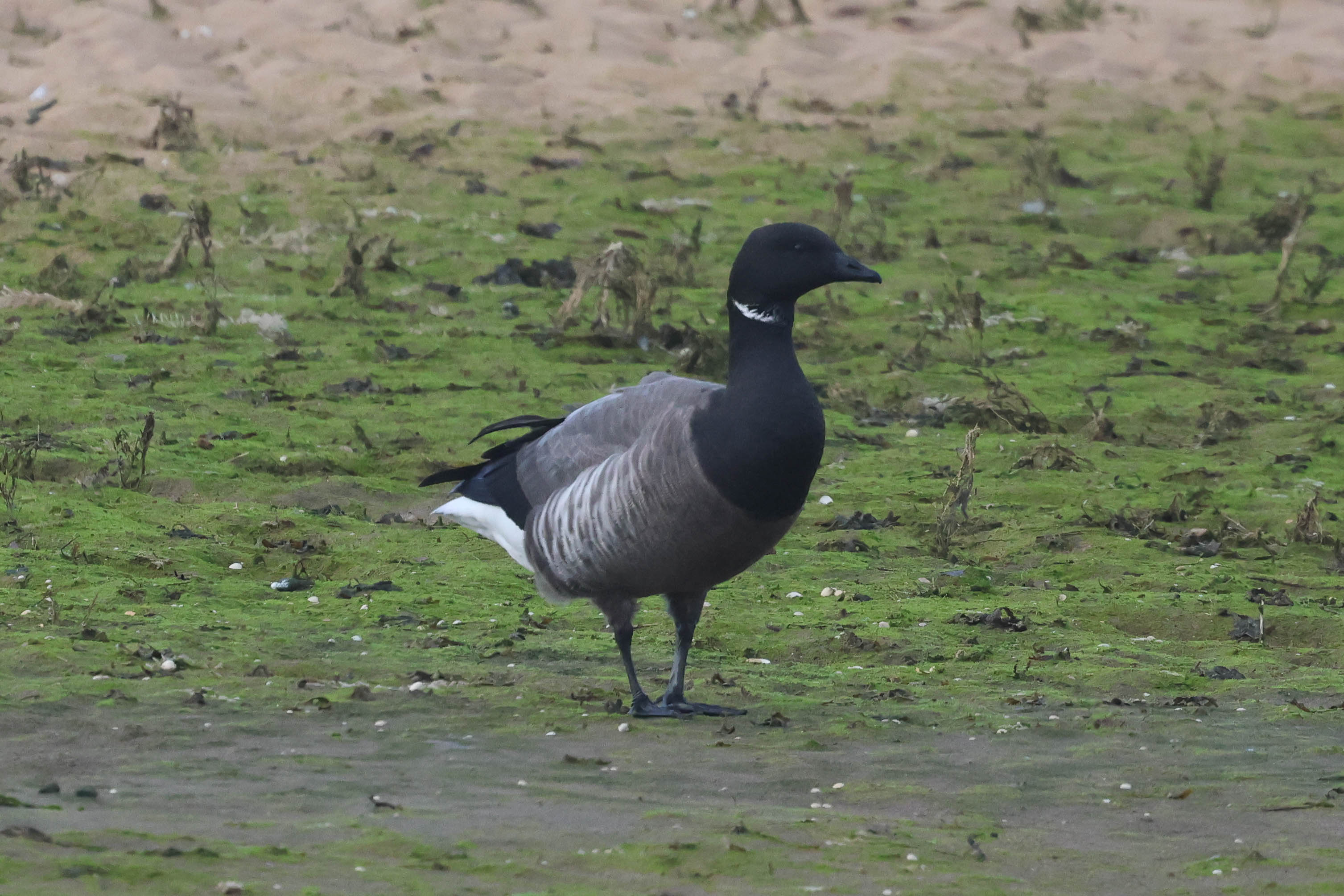
It had been an action-packed first day – more tomorrow…
















